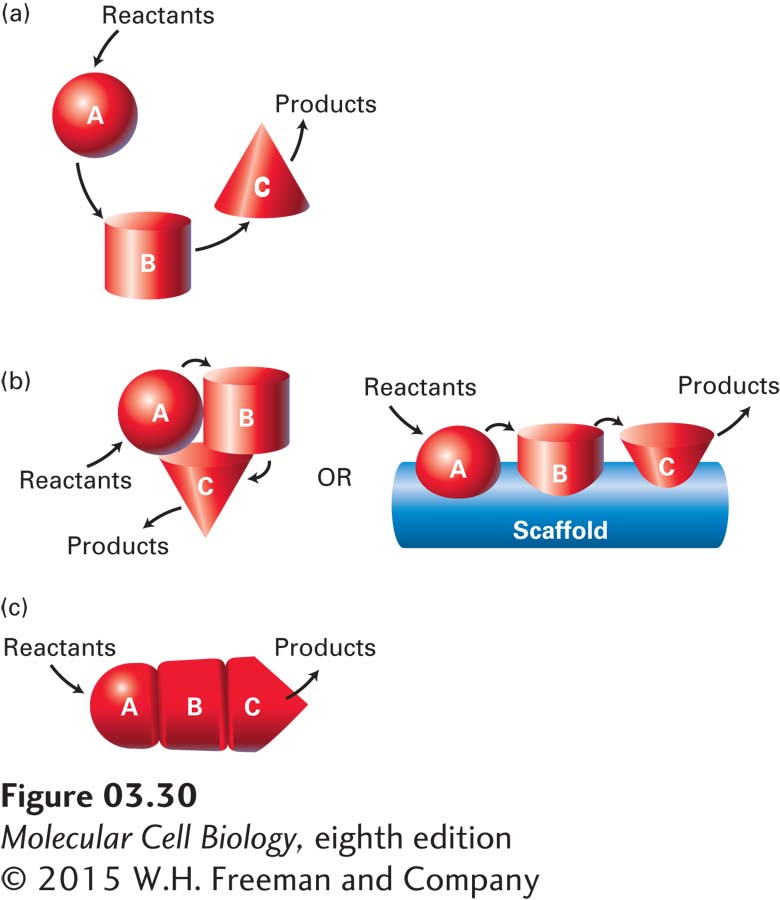Enzymes in a Common Pathway Are Often Physically Associated with One Another
Enzymes taking part in a common metabolic process (e.g., the degradation of glucose to pyruvate during glycolysis; see Chapter 12) are generally located in the same cellular compartment, be it in the cytosol, at a membrane, or within a particular organelle. Within this compartment, products from one reaction can move by diffusion to the next enzyme in the metabolic pathway. Diffusion, however, entails random movement and can be a slow, relatively inefficient process for moving molecules between enzymes (Figure 3-30a). To overcome this impediment, cells have evolved mechanisms for bringing enzymes in a common pathway into close proximity, a process called metabolic coupling.
In the simplest such mechanism, polypeptides with different catalytic activities cluster closely together as subunits of a multimeric enzyme or assemble on a common “scaffold” that holds them together (Figure 3-30b). This arrangement allows the product of one reaction to be channeled directly to the next enzyme in the pathway. In some cases, independent proteins have been fused together at the genetic level to create a single multidomain, multifunctional enzyme (Figure 3-30c). Metabolic coupling usually involves large multiprotein complexes, as described earlier in this chapter.
